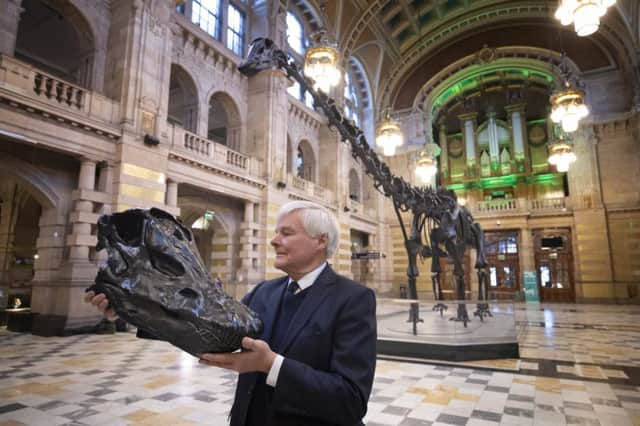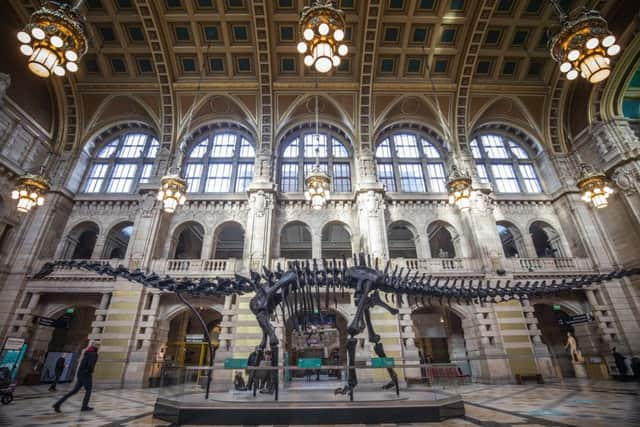Dippy, ‘the UK’s most famous dinosaur’, arrives at Kelvingrove Museum


Now Dippy, a plaster cast skeleton of a diplodocus dinosaur, has found a temporary home in Glasgow as part of a UK tour.
The impressive 292 bone structure will greet visitors to Kelvingrove in the museum’s central hall until May 5.
Advertisement
Hide AdAdvertisement
Hide AdThe fossilised skeleton from which Dippy was cast was discovered in Wyoming in 1898 and bought by Scottish industrialist Andrew Carnegie for his newly-founded Carnegie Museum of Natural History in Pittsburgh. The bones were subsequently recognised as a new species and named Diplodocus carnegii in honour of the Dunfermline-born philanthropist.


King Edward VII, a trustee of the British Museum, saw a sketch of the bones at Skibo Castle, Carnegie’s Scottish estate, in 1902 and the industrialist agreed to donate a plaster cast of the skeleton to the Natural History Museum in London.
It is this exhibit which has now gone on display in London.
William Thomson, Andrew Carnegie’s great grandson, was at Kelvingrove Museum for the opening today.
“For Andrew Carnegie, Diplodocus carnegii was more than a huge prehistoric creature,” he said. “It was a symbol and an opportunity.
“By gifting copies to the heads of state of seven other countries as well as the UK, Carnegie hoped to demonstrate through mutual interest in scientific discoveries that nations have more in common than what separates them.
“He used his gifts in an attempt to open inter state dialogue on preserving world peace – a form of Dinosaur diplomacy.
“Replicas of Diplodocus carnegii are still on display in some of the most famous natural history museums in Europe, but sadly the wellspring of their united history has been largely forgotten. The exhibition sheds some light on this remarkable story.”
Entrance to Kelvingrove remains free.